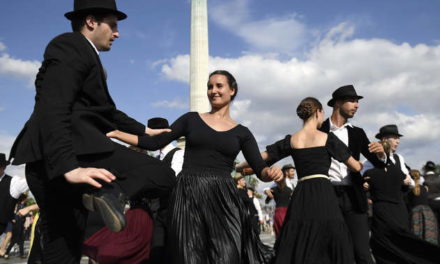After the Székelys left Bukovina eighty years ago, they found a home in Bátaszék, stated the ministerial commissioner responsible for national policy of the Prime Minister's Office in Bátaszék, at the handing over of the House of the Székelys.
Péter Szilágyi recalled: the resettlement of the Szeklers of Bukovina was decided in 1941 and implemented.
"If a community is still alive after eighty years, they have the recipe for creating a home: self-organization, living traditions, maintaining the community, preserving the value of the family and raising the next generation"
He added that the existence of such communities is extremely important for the State Secretariat for National Policy.
The Székely House was inaugurated on the occasion of the Józseffalva farewell organized for the fourth time in Bátaszék. The 320-square-meter building was created by the Bátaszék Székely Circle of Friends with a grant of 50 million forints from the State Secretariat for National Policy, 2.5 million forints from the municipality, and about 40 million forints worth of volunteer work, Péter Molnár, the president of the organization, told MTI . In recent years, several initiatives have started in Tolna - Hőgyész, Szekszárd, Kismányok, Bonyhád - which helped to keep the Szeklers of Bukovina together. He mentioned that, in addition, the Székely community of Hertelendy Village on the Danube has also grown with a community center and a Székely gate.
István Horváth (Fidesz), the region's parliamentary representative, said: the community center "contains" the joy, suffering and hope of the Szeklers of Bukovina. According to him, the support of the State Secretariat for National Policy also required the local Székely community to work for success.
"If we fight, hope, and unite, we can create real value in both the nation and the community."
In the community hall, the ethnographic heritage of the Székely people of Bukovina will be presented in the Székely landscape rooms, lectures and film screenings will be held in a newly built community hall, and the local Székely folk dance group and the 51-year-old folk song group can rehearse here. The 14-station Székely Golgotha, which presents the history of the Székely people, was placed in the hall. The carved wooden boards were made in Bácská in 1943, during the migration of the Szeklers.
The Szeklers of Bukovina fled from Csík to Bukovina after the Madefalv disaster in 1764. They settled here between 1775 and 1786 in five villages: Istensegítsen, Fogadjisten, Andrásfalva, Józsefffalva and Hadikfalva. Some of them migrated to Déva and the Al-Danube in the 1880s, and in 1941, based on a Romanian-Hungarian agreement, 4,500 people had to leave their homeland. They were settled in Bácská, from where they fled to Hungary in 1944. In 1945, they found a new home in Tolna, Baranya and Bács-Kiskun counties, partly in the place of displaced Germans. People from Józseffalva settled in Bátaszék.
Source: MTI
(Cover photo: MTI/Dániel Kiss)













